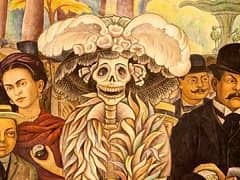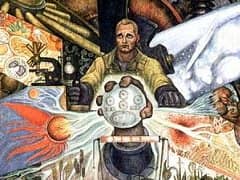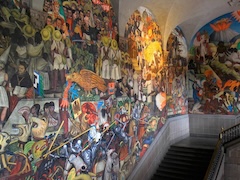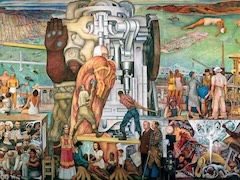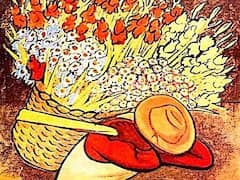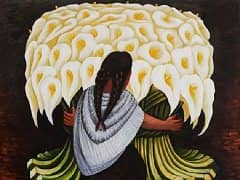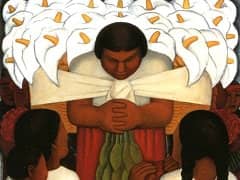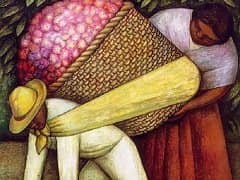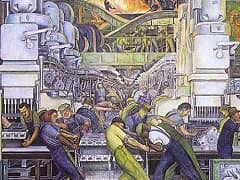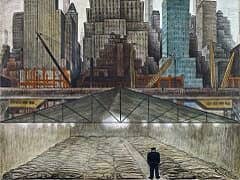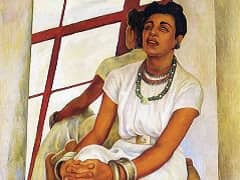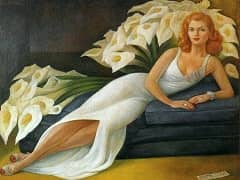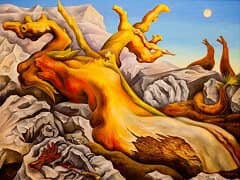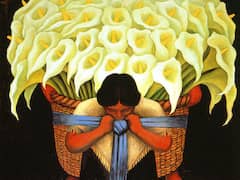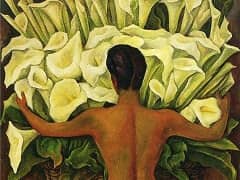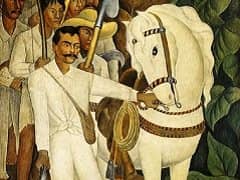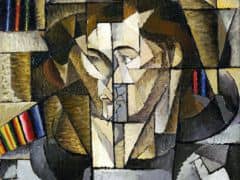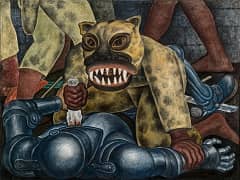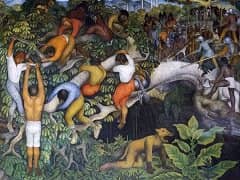The Eiffel Tower, 1914 by Diego Rivera
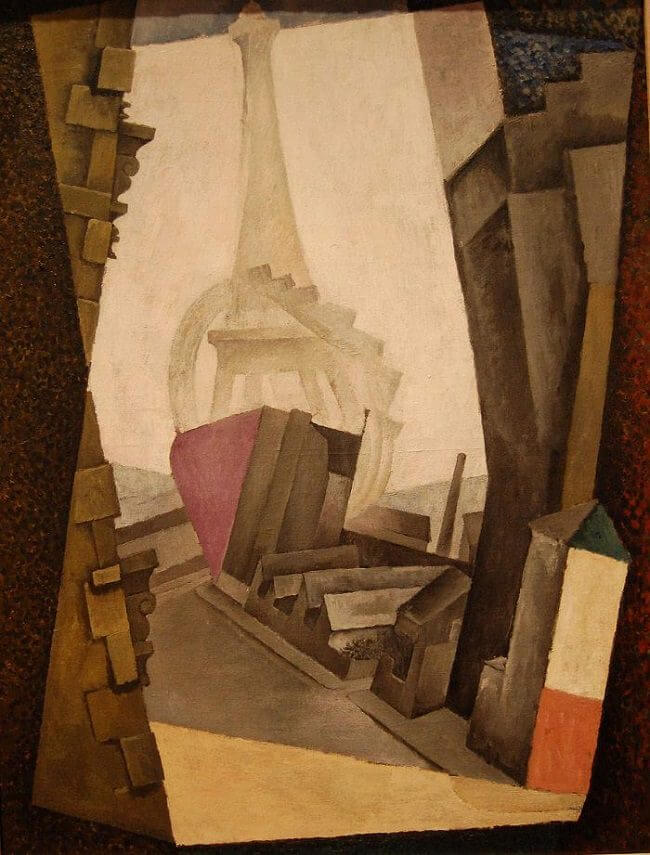
In the summer of 1914, as the European political situation was reaching a crisis point, Rivera, Beloff, Lipchitz, and several other artists and writers traveled to the Balearic Islands off the Spanish coast for a walking and
sketching tour. While executing naturalistic landscapes, Rivera also, as he would write, "continued my experiments with Cubism. I had attempted to achieve new textures and tactile effects by mixing substances like sand and
sawdust in oils." These tangible surfaces illustrate Rivera's apparent pursuit of a Bergsonian premise: that experience is filtered through memory and sense perception, with the two interrelated.
While Rivera and his friends were in Mallorca, the largest of the islands, their sojourn was dramatically interrupted by the news of the eruption of World War I. Rather than return immediately to France, Rivera and Beloff
remained in neutral Spain, traveling to Barcelona and from there to Madrid. There Rivera became reacquainted with the Spanish writer Ramon Gomez de la Serna, as well as fellow Mexican expatriates, including the architect
Jesus Acevedo and the writer Alfonso Reyes.
Rivera also became a central figure of a larger, international artistic community transported from Montparnasse to Madrid, and he openly proclaimed his patriotism for France during the period. As Reyes wrote, "Rivera was all
fired up for getting back to France and going to war." The artist later told of attempting to enlist several times, only to be rejected by the French army. Though a notoriously unreliable narrator, Rivera may have in fact been
truthful in his account, for he had flat feet and his weight, at times, exceeded three hundred pounds.
The Eiffel Tower records his patriotic fervor. The painting was executed in Spain in November 1914. Rivera's innovative composition highlights the Eiffel Tower, merging its structure with the Great Wheel. The preeminent
emblem of Paris, the tower was also an appropriate symbol for France during the conflict, as it functioned as a radio transmitter and flashed electric light in the blue, white, and red of the French tricolor. In Rivera's
painting, these symbolic colors appear in the background at right and are repeated in a flag-like form just below the wheel and tower, which in contrast are rendered ghostly pale. The ethereal forms of these icons of Parisian
modernity intimate Rivera's distance from the city. Characteristically, Rivera was not content with simply creating an homage to his adopted homeland, but added another banner on a building at lower right that echoes the
Mexican national colors of green, white, and red.

